
Henderson: Is G7 core inflation about to break higher?
G7 headline consumer price inflation is rising sharply but “core” inflation – excluding food and energy prices – remains close to its average in recent years.
23.02.2017 | 12:27 Uhr
Core inflation may increase in 2017-18, reflecting low G7 unemployment, “second-round” effects from the reversal in commodity prices and a permissive monetary environment. Higher core inflation may result in monetary authorities tightening policy later in 2017 despite a slowdown in economic growth (suggested by recent monetary trends – see previous post).
G7 headline CPI inflation rose to 1.8% in January, the highest since July 2014 and up from a low of zero in September 2015. Core inflation, however, was unchanged at 1.5%, close to its average of 1.4% over the last five years (i.e. 2012-16) – see first chart.
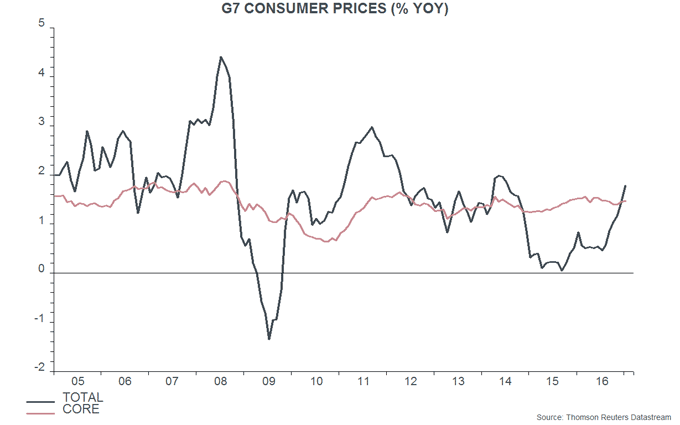
The headline / core gap is closely correlated with the annual rate of change of the S&P GSCI commodity price index. This relationship suggests that the gap will rise from 0.3 percentage points (pp) in January to about 1 pp in spring 2017 – second chart. Headline inflation, therefore, may increase to about 2.5%, assuming a stable core rate. The gap will decline later in 2017 if the GSCI index stabilises – but current economic strength could result in a further gain.
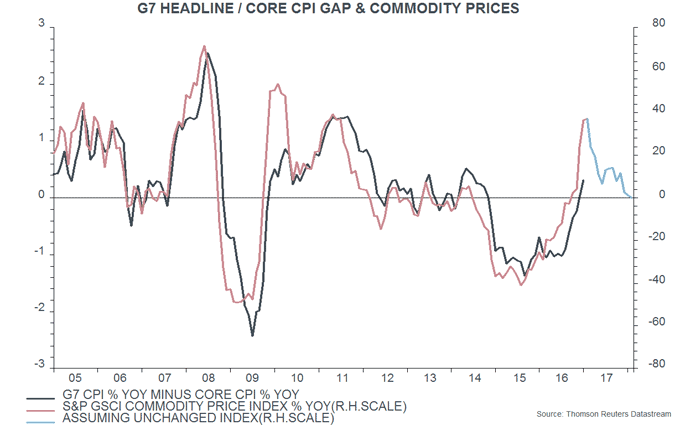
Monetary policies are likely to key off core rather than headline inflation developments. G7 core inflation may rise in 2017-18, for three reasons. First, core inflation has increased historically when the G7 unemployment rate has fallen below 6% – third chart. The rate moved below this level in March 2015; core inflation has risen by 0.2 pp since then (i.e. from 1.3% to 1.5%). The jobless rate was 5.3% in December 2016, equal to the low reached in the 2000s (2007), and may decline further in lagged response to current economic strength.
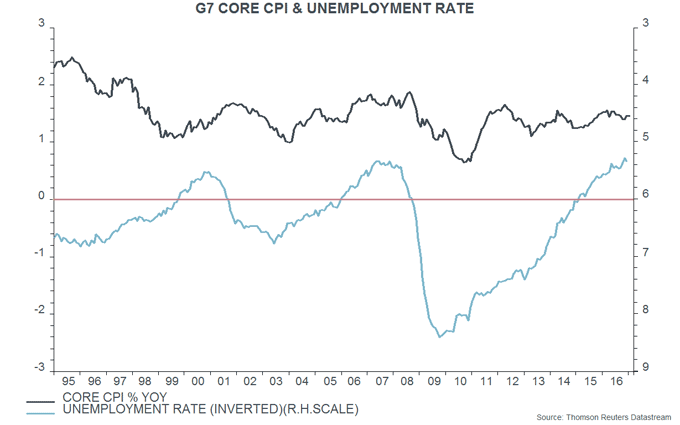
Secondly, core inflation has also risen on average historically after the headline / core gap has turned positive – fourth chart. Stronger commodity prices boost input costs for producers of core consumer goods and services, while higher headline inflation may feed back into increased wage demands. Core inflation rose significantly when a large headline / core gap last opened up in 2010-11, despite a high unemployment rate.
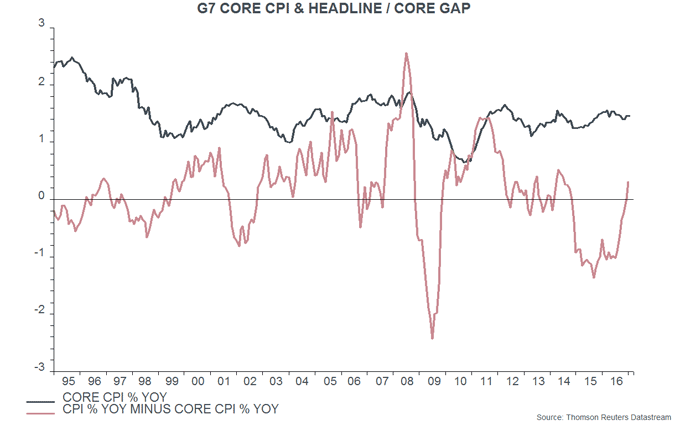
Thirdly, G7 narrow money has been growing strongly in recent years, suggesting a loose monetary environment that may accommodate rising core inflation. The trend decline in nominal GDP expansion between the 1970s and the 2000s reflected progressively lower peaks and troughs in narrow money growth – fifth chart. Average money growth since 2010 has exceeded the decade averages – shown by the horizontal lines in the chart – for the 1980s, 1990s and 2000s.
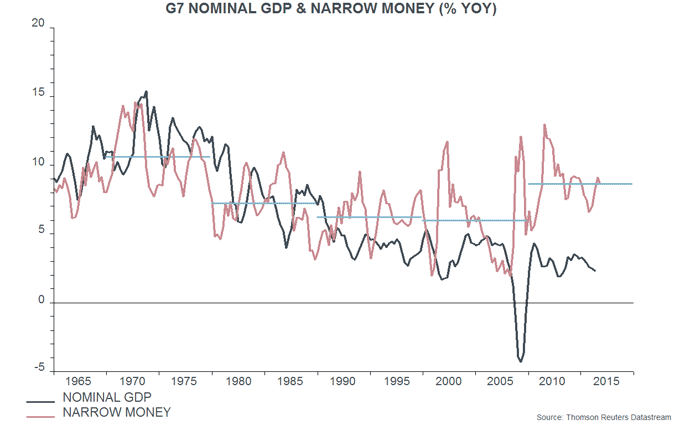
Die Wertentwicklung in der Vergangenheit ist kein zuverlässiger Indikator für die künftige Wertentwicklung. Alle Performance-Angaben beinhalten Erträge und Kapitalgewinne bzw. -verluste, aber keine wiederkehrenden Gebühren oder sonstigen Ausgaben des Fond.
Die Informationen in diesem Artikel stellen keine Anlageberatung dar.



Diesen Beitrag teilen: